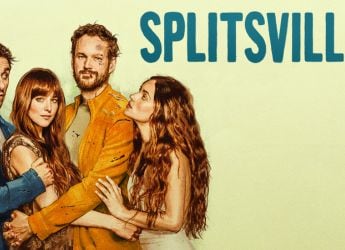- Home
- Entertainment
- Entertainment Features
- Planet Earth II India’s Langurs, New York Falcons, and Wildlife in Cities
Planet Earth II - India’s Langurs, New York Falcons, and Wildlife in Cities

Photo Credit: BBC
The final episode of Planet Earth II takes us inside various cities of the world. A nature documentary chronicling the lives of animals in cities sounds quite interesting, and we were not surprised to see that the makers of Planet Earth II found things we’d never even imagined even though we live in some of the cities shown in this episode.
We’ve already discussed five other episodes of the show, starting from islands, to mountains, to jungles, via deserts, to grasslands. Each of these episodes had its ‘wow’ moments that made our jaws crash into the floor. This means that our expectations were sky high for the final episode and we’re happy to report that the show lived up to its billing.
Here’s our discussion about the sixth and final episode of Planet Earth II. What follows is a condensed and edited version of the same.
Akhil Arora: They saved the best for the last, didn't they? For me, the ‘Cities’ episode of Planet Earth II was the most interesting of the lot, just to learn how wildlife has adapted to live in this crazy landscape of concrete and glass. From the langurs in Jodhpur making parkour look like child’s play, to the peregrine falcon making use of thermals in New York, the change was not only fascinating to watch, but all the more interesting for how they are so successful outside what would be considered their natural habitats.
As the episode demonstrated, it’s not been perfect for everyone though - the turtles on the beaches of Barbados get confused by our bright lights and crawl towards them, instead of heading out to sea as they would normally, guided by the Moon. Thankfully, conservationist groups such as the Barbados Sea Turtle Project are helping the critically endangered species.
![]()
Photo Credit: BBC
What also impressed me was just how much of the episode was set in India. Of the 10 species showcased in ‘Cities’, three were filmed in our neighbourhood, including Jodhpur, Jaipur, and Mumbai. It goes to show our tolerance of wildlife living amongst us, and while that’s great in terms of co-existing with nature, having 200 people attacked by leopards in 25 years isn’t.
Pranay Parab: As someone who’s lived in Mumbai, I was shocked to find that the makers of Planet Earth II managed to film leopards in the city. Let me say that again. They found and filmed leopards hunting piglets in Mumbai! I’ve read sporadic reports of leopards being spotted in certain parts but never seen footage of these predators.
Once I recovered from the shock of realising that I live less than 15km away from leopards, I started enjoying the episode. I always thought of leopards as apex predators but to see them snatching piglets and running away from a herd of pigs was a bit of a disappointment.
That reminded me of children’s tales where wolves snatch a sheep or two and flee. In my mind, leopards are stealthy creatures who hunt and kill with impunity. I’d imagined they’d attack the herd of pigs and kill one, while the others run for their lives. This made leopards seem rather cowardly.
![]()
Photo Credit: BBC
Akhil: I’ve seen videos where wild boars kill leopards, and in considerable numbers - as they were shown resting together - even the domesticated pigs represent a threat to the leopard, I suppose. The fact that the predator went after piglets proves that it prefers not to meddle directly with the adults, and doesn’t have the same strength as other members of the cat family.
Even though the leopards don’t see humans as prey, those are parts of Mumbai I’d like to avoid all my life. Having your possessions stolen by Jaipur’s rhesus macaques is annoying, but at least it’s not life-threatening.
Speaking of the Old World monkeys, it was a joy to watch how brazen their shoplifting has become. Endlessly funny, too. They grab anything they can get, be it a bunch of grapes or five packets of local-made chips in the case of one prankster.
Pranay: I really don’t like those monkeys. They’re very aggressive and if you have a bag, they will try their best to take it from you. They’ve attacked me more than once and the best defence is to carry a stick or just drop your bag and run. In Planet Earth II, there was one shot of a monkey stealing a mango drink - I thought that was nicely framed. The monkey enters the frame, takes the bottle, and leaves, while the boy sitting with the bottle has no clue.
![]()
Photo Credit: BBC
Meanwhile, the langurs were very entertaining. They’re far less likely to attack people than the rhesus macaque and that makes me like them a lot more. The shots of people (and even the crew) feeding the langurs were so soothing. All of that has changed their life entirely. David Attenborough did say that they even give birth to twins in the city, which doesn’t happen in the wild.
All this talk of monkeys reminds me of the amazing camera work by the crew once again. Shots of langurs trying to attack the alpha male were so well done that I could swear all langurs were trained actors. The crew was just way too close to those langurs.
Akhil: I was thinking exactly that when they were showing those exquisite shots. So it was quite nice of them to tell us how they captured the langurs in the post-episode ‘Diaries’ segment. The use of latest technology - from remote camera traps, drones and now camera-on-cables - has allowed so much of Planet Earth II to be possible, and the langur segment could easily rival any action film.
And so was the case with the falcons, even though it wasn’t featured in how-they-did-it part of the episode. According to the BBC, it was the first time that the bird’s hunt for pigeons was captured successfully, all of it happening at speeds over 300km/h in the heart of New York, amid skyscrapers. Getting permissions just to capture it, from rooftops of buildings and flying a helicopter in the city, took nine months in itself.
![]()
Photo Credit: BBC
Unlike langurs and falcons, the challenges involved with filming animals that can attack you are much greater. And harrowing. The producer for the ‘Cities’ episode, Fredi Devas, told The Guardian that on his first night in Harar, Ethiopia, eight hyenas walked past him and two brushed his leg. It’s so strange that the same animals, who are inherently wild outside the city walls, have developed an amicable relationship with people.
Pranay: Perhaps that is the best thing about human domination of the world. Hyenas and langurs peacefully coexist with humans in parts of the world and this friendship is great to see. To some extent, you could say the same about cats and dogs, but they don’t fall in the same category as langurs or hyenas as they’re pets.
That reminds me of the great bowerbirds of northern Australia. The males build and maintain bowers on the ground and in cities, they tend to collect all kinds of trinkets. When a female shows up at their nest, they show them these trinkets to try and impress them. I thought that was one of the best “mini-stories” from Planet Earth II. The male finds a red heart, which looked like something you’d find attached to a teddy bear soft toy. It tries to attract the female, only to realise that it’s actually an adult male without the pink crest on its neck. The crest develops later in life, so this male was quite young and the entire segment was hilarious.
![]()
Photo Credit: BBC
The pigeon is one bird that has benefitted a lot from cities. It has adapted wonderfully to human habitation and has almost become a pest in many places. That, in turn, has allowed predators such as the peregrine falcon and the catfish to thrive.
Here in India pigeons are fast becoming a menace but I haven’t seen predators flying around keeping their numbers in check. That’s not a problem in New York, where peregrine falcons are around, or France, where catfish attack them. It was surprising to see fish hunting birds - it’s usually the other way round. Cities appear to be giving rise to an entirely new food chain.
Akhil: And changing some established patterns too. As Attenborough explored in the episode, cities tend to be warmer than the surrounding countryside, which attracts birds. One of those birds species happens to be starlings of Rome, who after feeding in the outskirts during the day, return to the city’s warmth.
Unfortunately, that means Rome’s cleanup crew have their work cut out for them, what with 10 tonnes of starlings’ droppings raining down on the city in a single winter day. The only good thing to come out of it are the daily evening air shows which the starlings perform in throngs million-strong. It’s an enchanting and serene display, the true nature of which still lies beyond our grasp.
One of my favourite moments from the episode was Singapore’s Supertree Grove and Milan’s Bosco Verticale. While it’s heartening to see that some places are embracing a more balanced ecosystem, we aren’t doing anywhere near enough to turn things around for Earth.
![]()
Photo Credit: BBC
Mumbai, because of all its rapid growth and political neglect, has been turned into a concrete jungle devoid of any breathing room. I for one believe offsetting carbon footprint of constructing skyscrapers should be made mandatory, and landowners should be given tax credit for preserving green space.
Pranay: As we’re seeing in Singapore. Unfortunately other cities in the world haven’t yet followed suit. If they do, they will realise - as Singapore and London have - that some wildlife will return to cities. It makes me very sad to see people keep nothing but their own profit in mind while allowing rampant construction in every green space they can find. It’ll all come to a head soon and it will be too late to save the planet.
There’s some greenery where I live and I’ve spotted so many different species of birds here. We feed them and were surprised to see even squirrels arriving to grab a bite. These creatures are still in cities but they’ll perish if development continues to come at the cost of the environment.
Akhil: A point Attenborough made quite well in the closing moments. As humans, we have the power to change the face of the Earth, he said. “It's surely our responsibility to do everything within our power, to create a planet that provides a home not just for us, but for all life on Earth,” he added.
![]()
Photo Credit: BBC
He later mentions that some of the most fascinating encounters with the natural world the crews had during filming, came in the cities. Only last week I learned that a chunk of sea ice the size of India had vanished, and 2016 looks set to be the warmest year on record. It’s had devastating effects for all kinds of wildlife across our planet, which is what makes shows like Planet Earth II so timely and relevant.
It’s been nice to read that the BBC nature documentary has received some of the highest ratings in the UK ever, and hopefully that viewership trend will continue as the show gets syndicated in other countries. And even as Planet Earth II is currently the highest rated show on IMDb, my hope is that it will also turn into action.
With the series coming to a close, that also marks the end of our deep dive discussions. Thank you for following along. If you’ve completed the entire season and want more, take a look at some of Attenborough’s recent work - The Hunt, Africa, and Frozen Planet - or go beyond that for feature-length excursions, such as The Ivory Game, Virunga, and Blackfish.
Residents in the UK can watch Planet Earth II for free via BBC iPlayer. If you live outside UK, you can use browser extensions such as Beebs to watch it.
Catch the latest from the Consumer Electronics Show on Gadgets 360, at our CES 2026 hub.
Related Stories
- Samsung Galaxy Unpacked 2025
- ChatGPT
- Redmi Note 14 Pro+
- iPhone 16
- Apple Vision Pro
- Oneplus 12
- OnePlus Nord CE 3 Lite 5G
- iPhone 13
- Xiaomi 14 Pro
- Oppo Find N3
- Tecno Spark Go (2023)
- Realme V30
- Best Phones Under 25000
- Samsung Galaxy S24 Series
- Cryptocurrency
- iQoo 12
- Samsung Galaxy S24 Ultra
- Giottus
- Samsung Galaxy Z Flip 5
- Apple 'Scary Fast'
- Housefull 5
- GoPro Hero 12 Black Review
- Invincible Season 2
- JioGlass
- HD Ready TV
- Laptop Under 50000
- Smartwatch Under 10000
- Latest Mobile Phones
- Compare Phones
- Honor Magic 8 RSR Porsche Design
- Honor Magic 8 Pro Air
- Infinix Note Edge
- Lava Blaze Duo 3
- Tecno Spark Go 3
- iQOO Z11 Turbo
- OPPO A6c
- Samsung Galaxy A07 5G
- Lenovo Yoga Slim 7x (2025)
- Lenovo Yoga Slim 7a
- Lenovo Idea Tab Plus
- Realme Pad 3
- Moto Watch
- Garmin Quatix 8 Pro
- Haier H5E Series
- Acerpure Nitro Z Series 100-inch QLED TV
- Asus ROG Ally
- Nintendo Switch Lite
- Haier 1.6 Ton 5 Star Inverter Split AC (HSU19G-MZAID5BN-INV)
- Haier 1.6 Ton 5 Star Inverter Split AC (HSU19G-MZAIM5BN-INV)







![[Sponsored] Haier C90 OLED TV | Dolby Vision IQ, 144Hz OLED and Google TV in Action](https://www.gadgets360.com/static/mobile/images/spacer.png)









